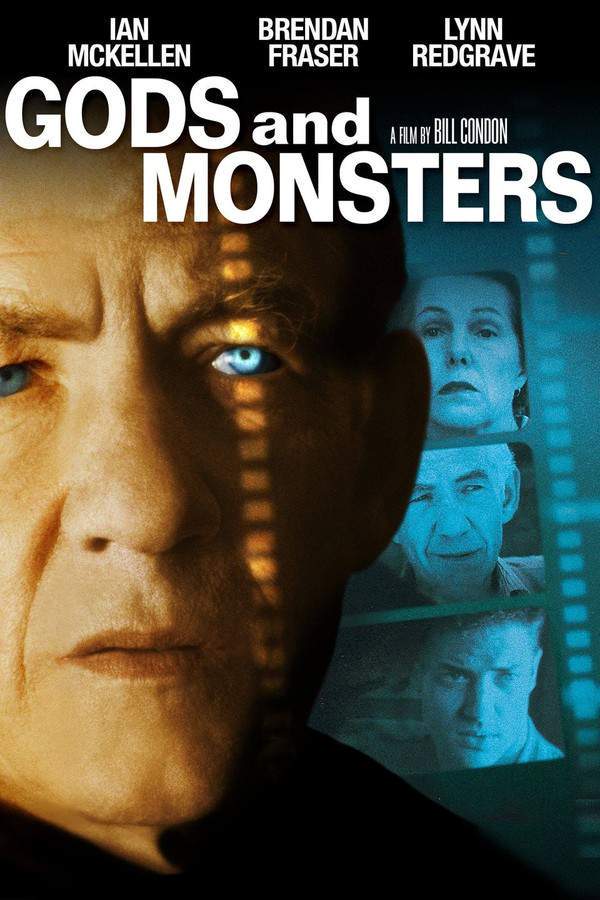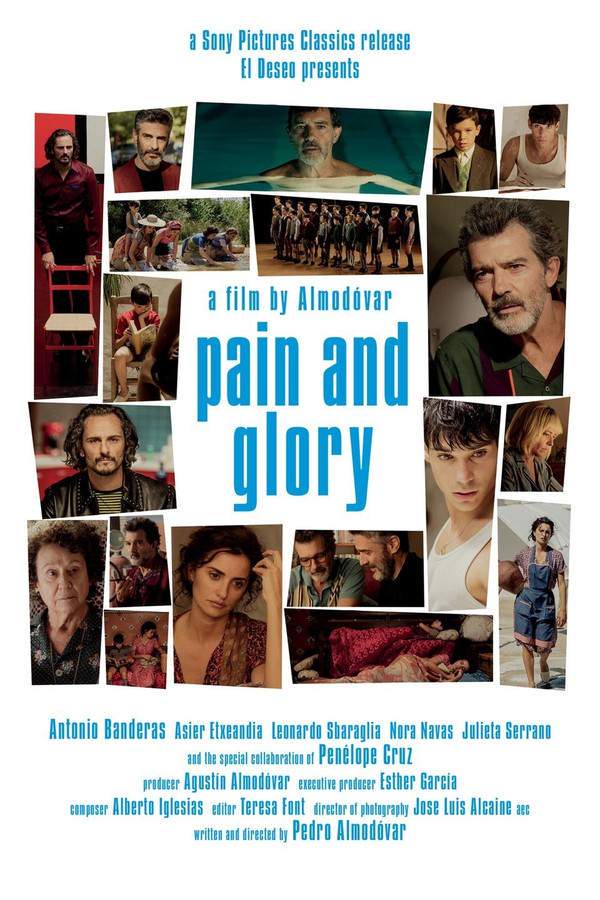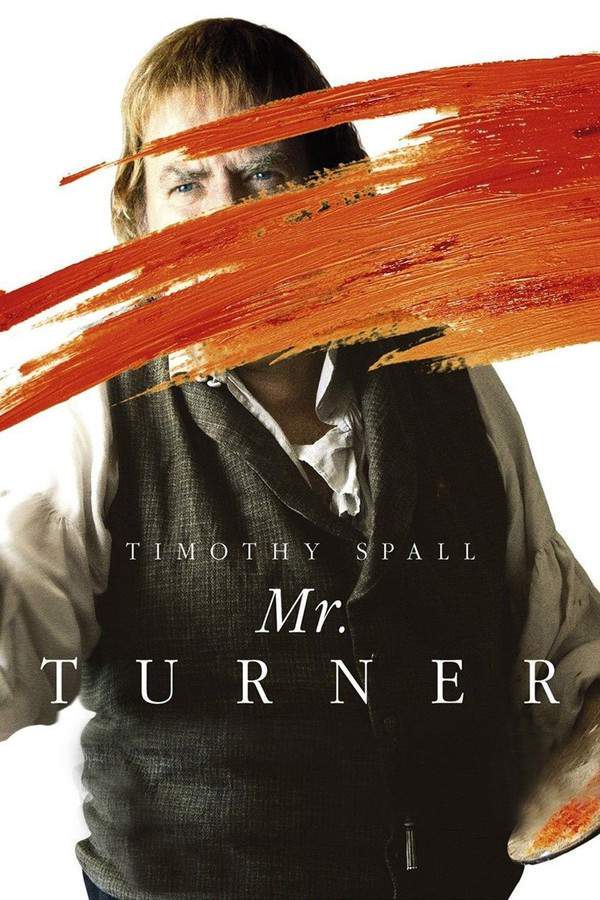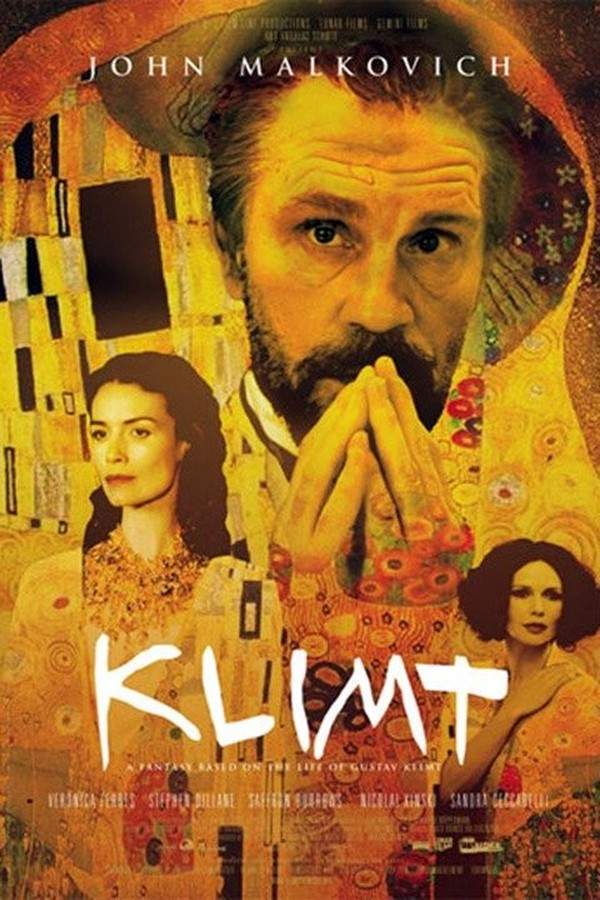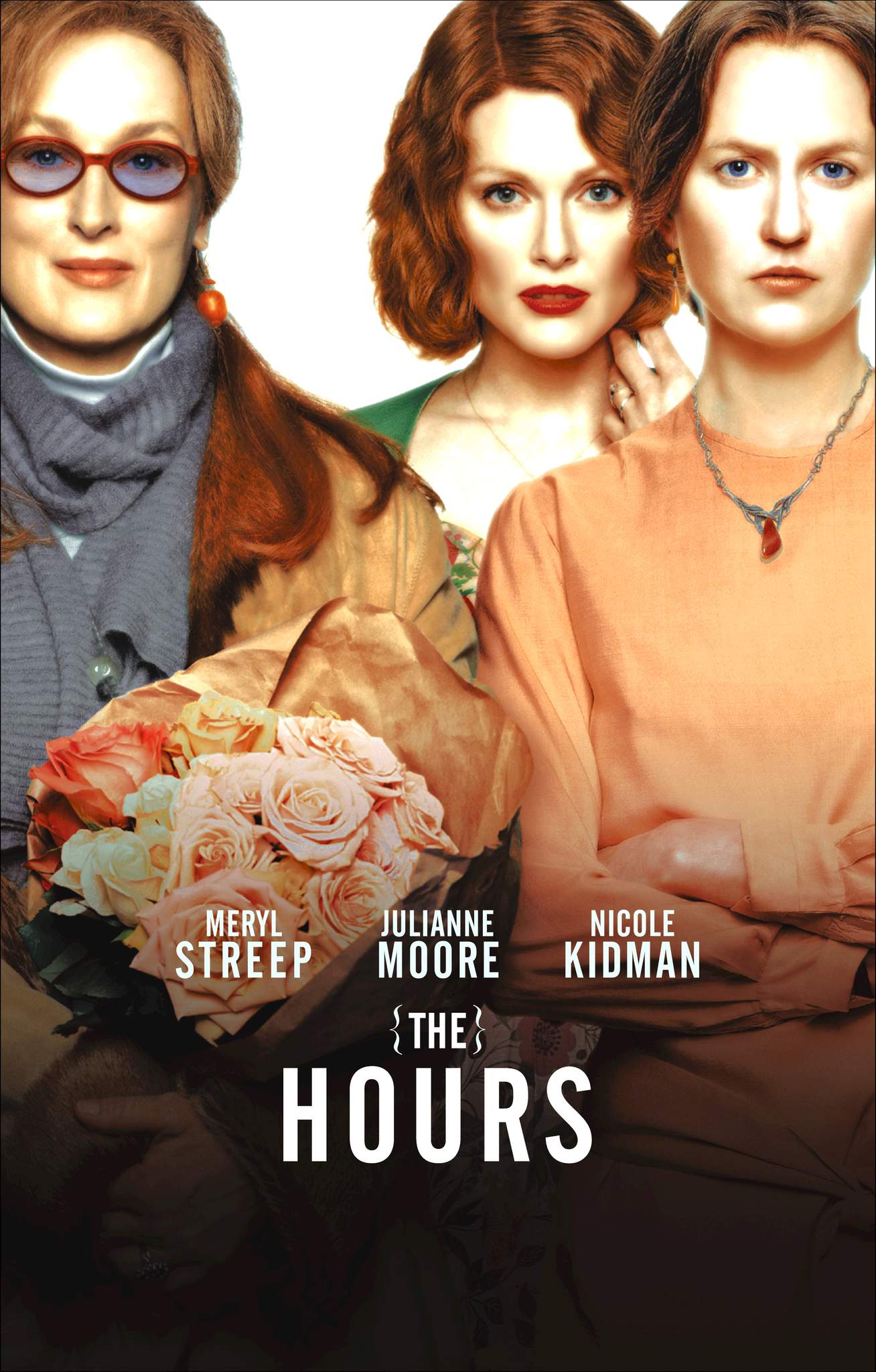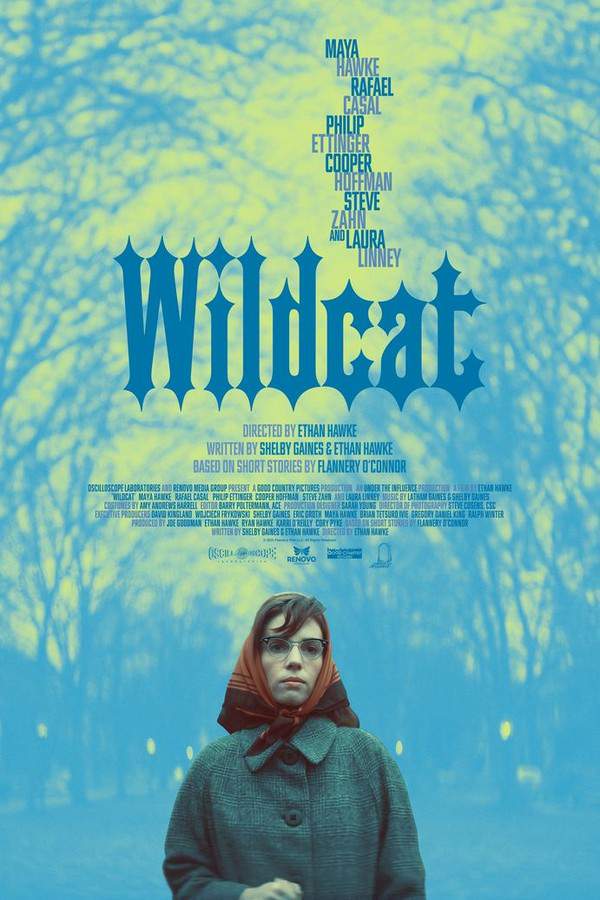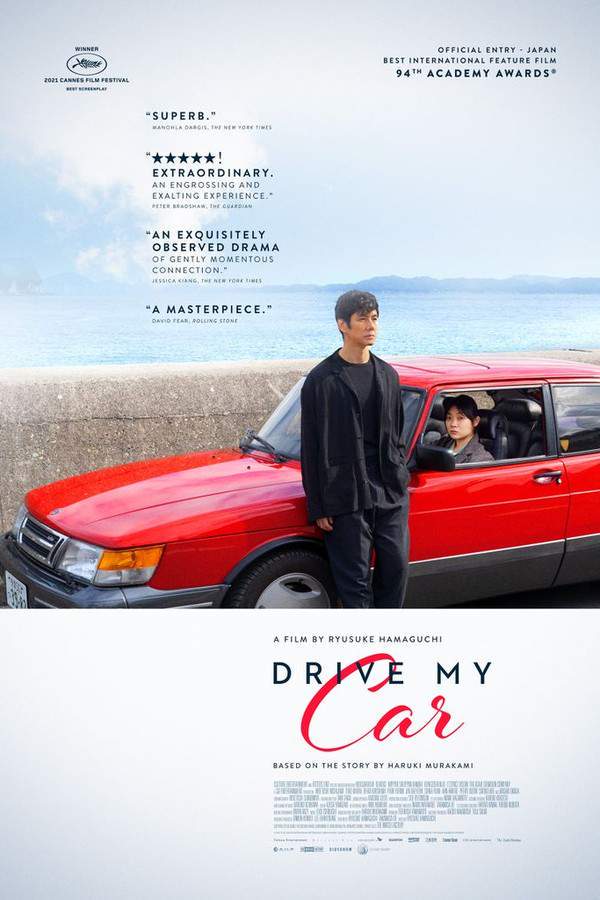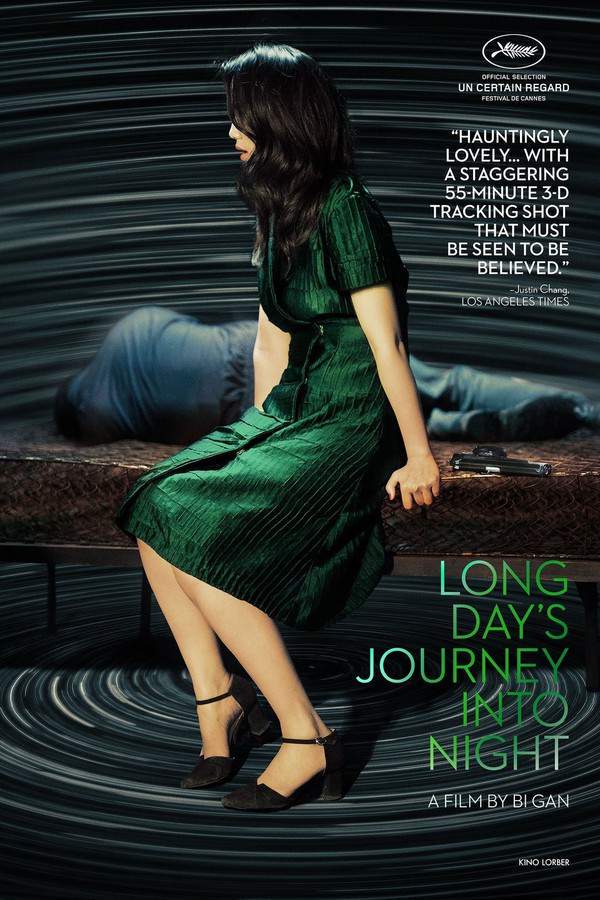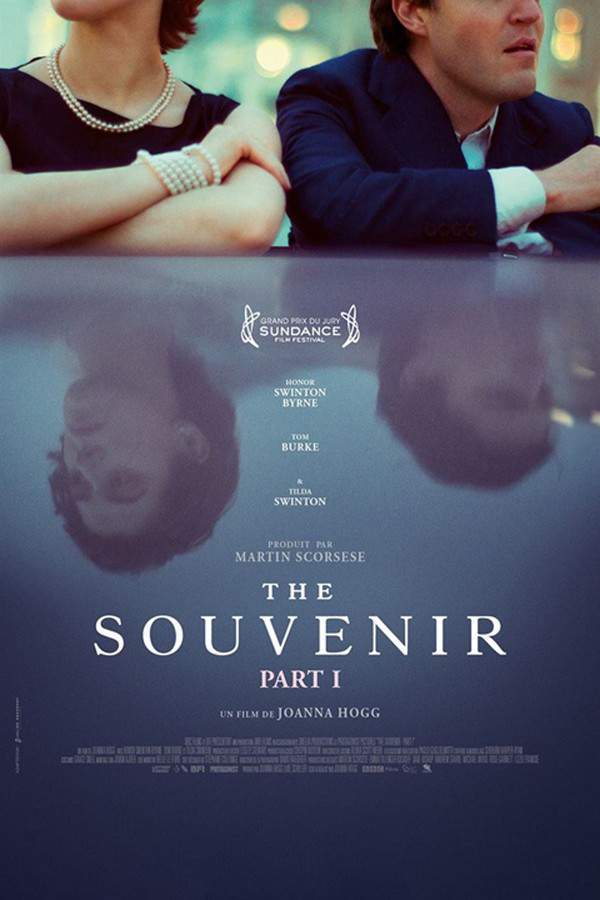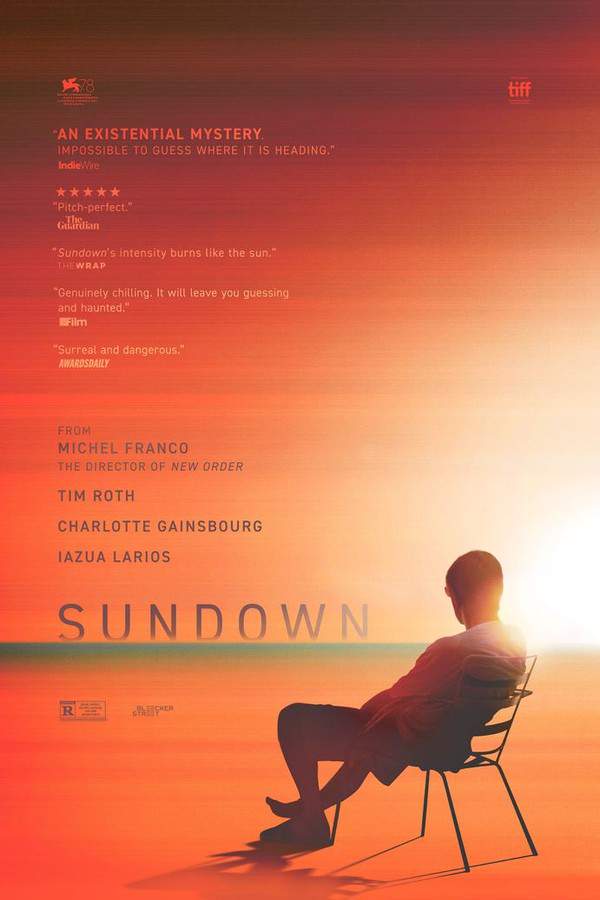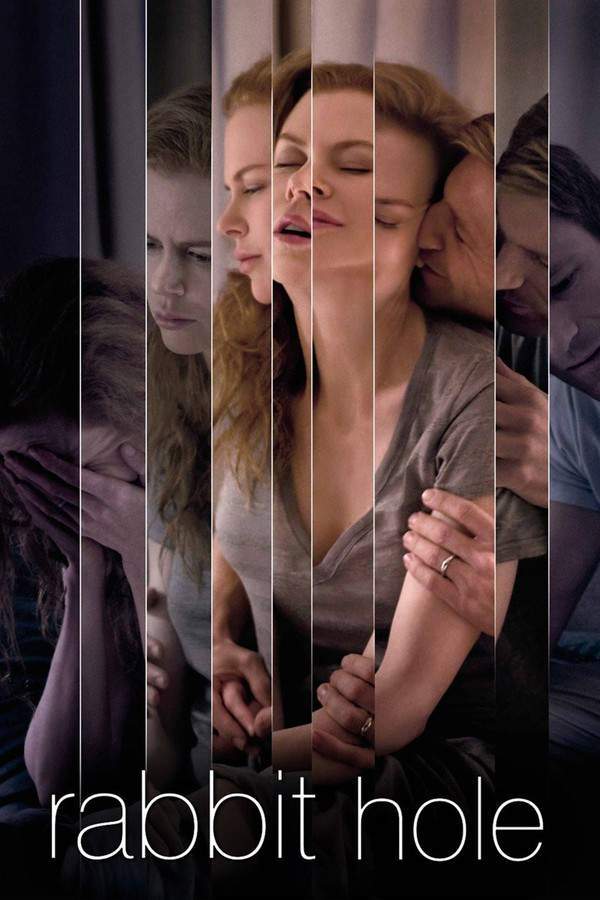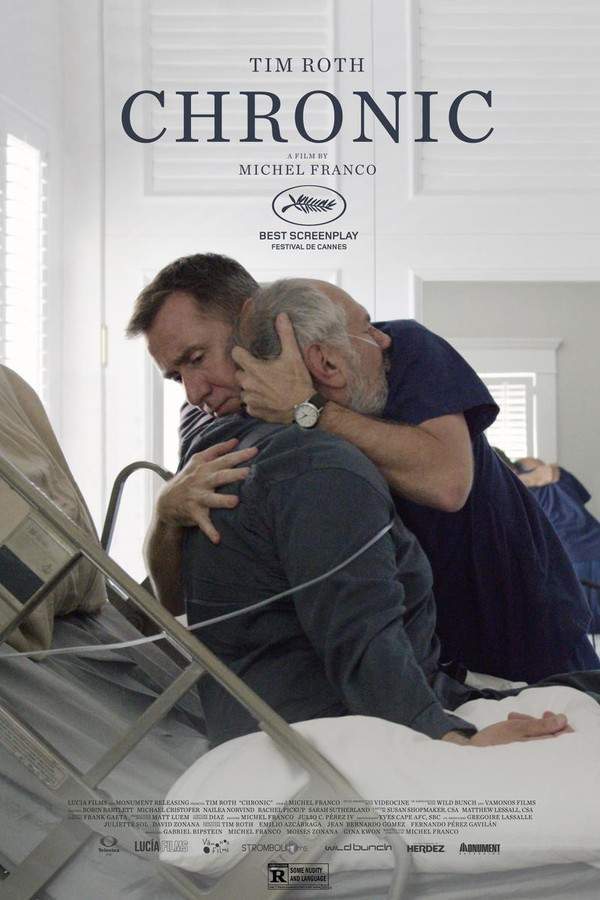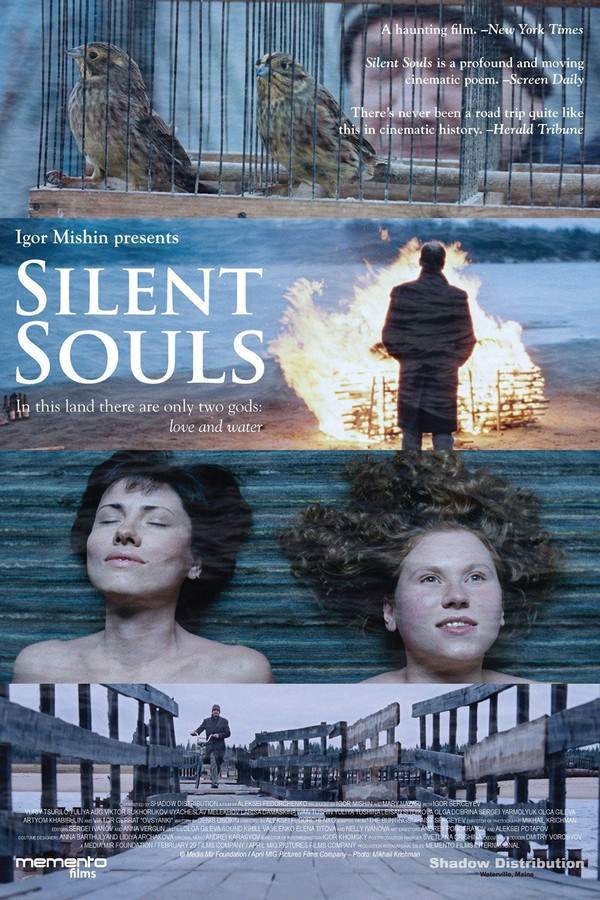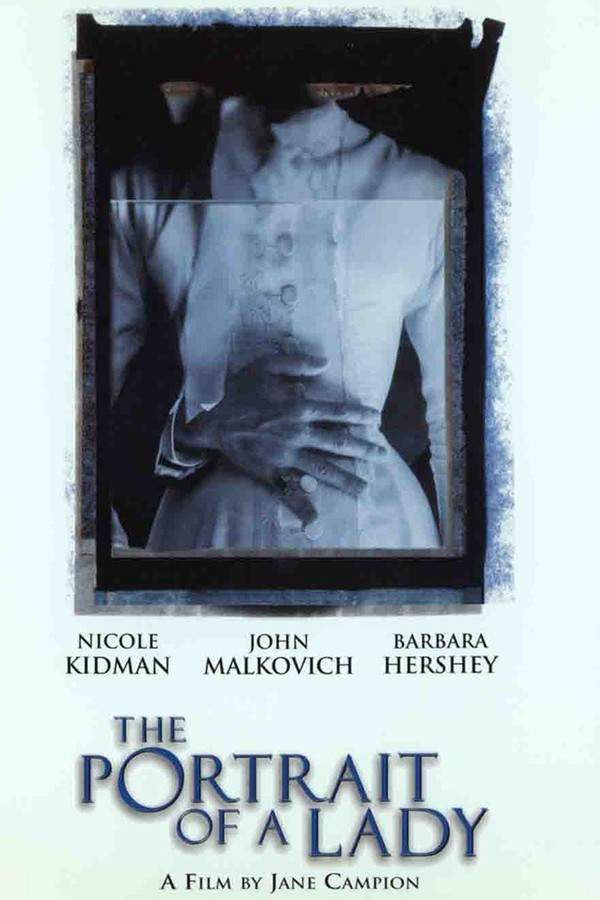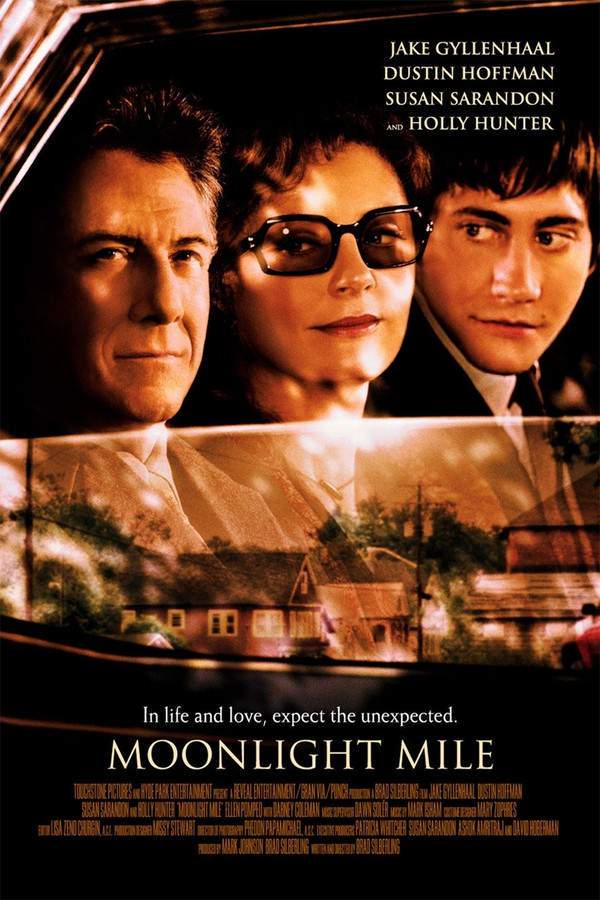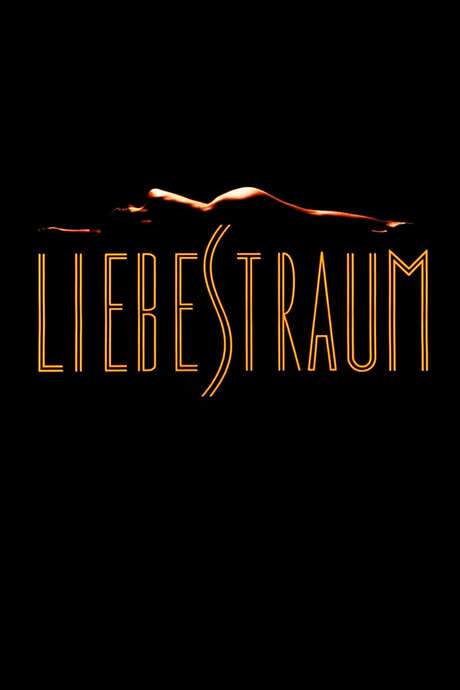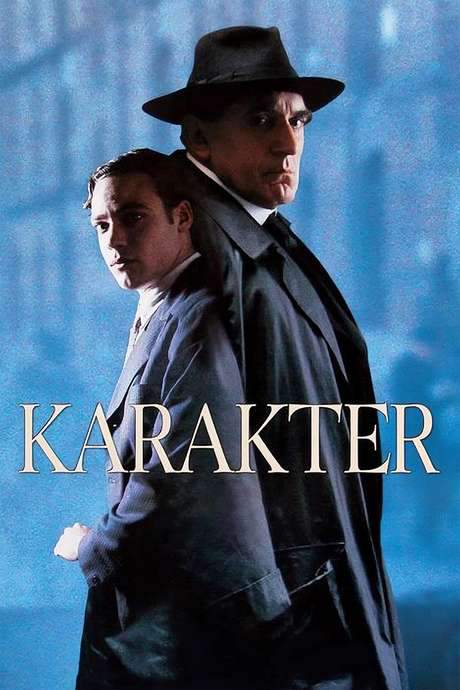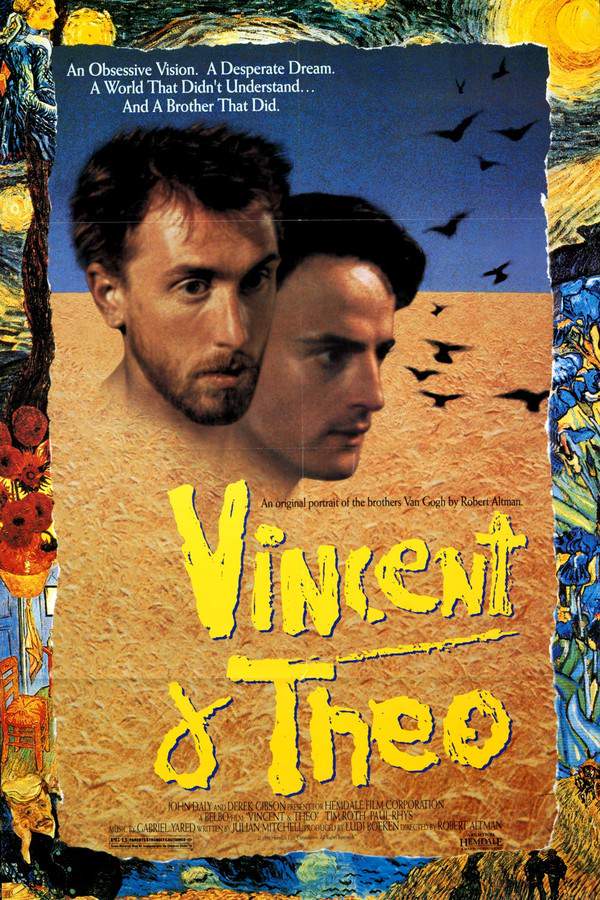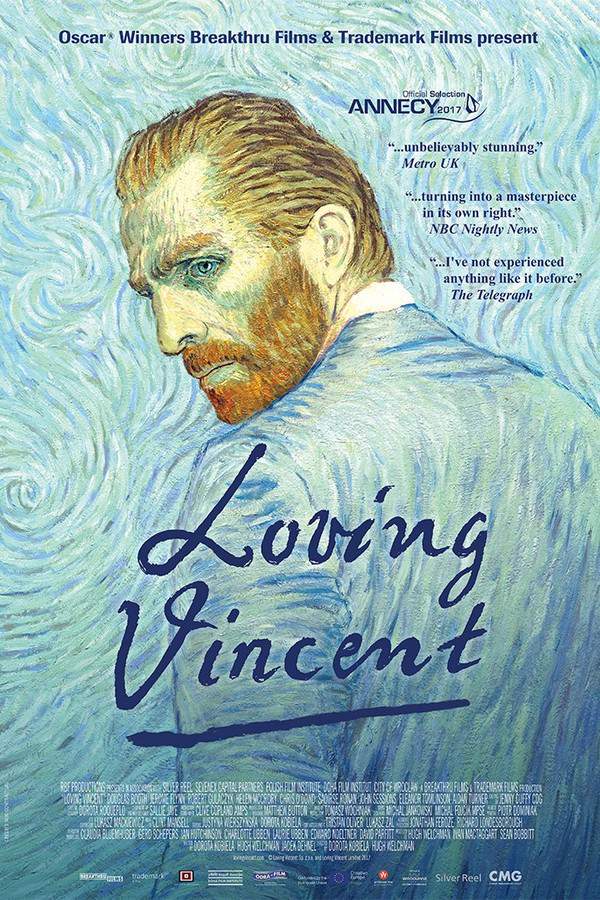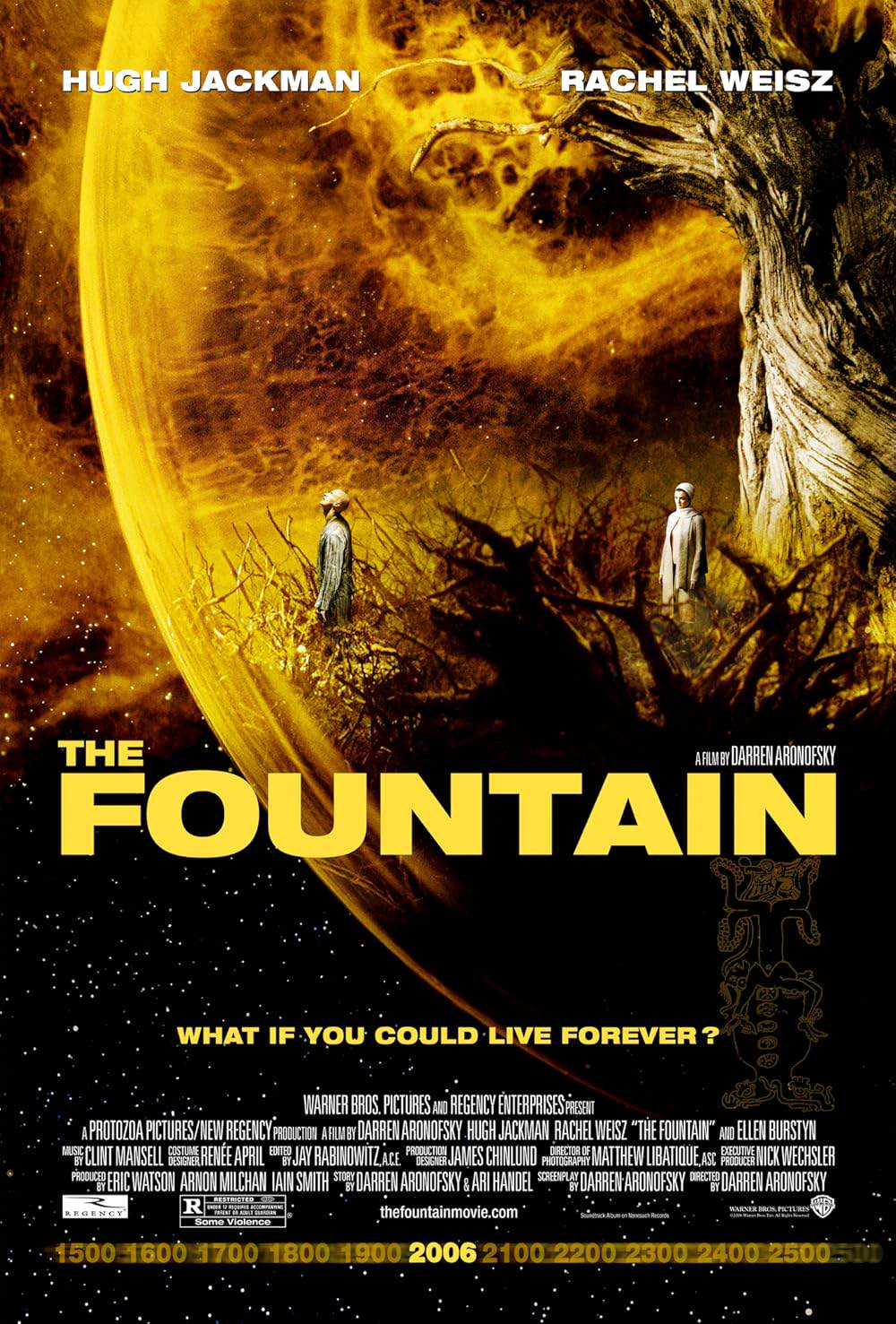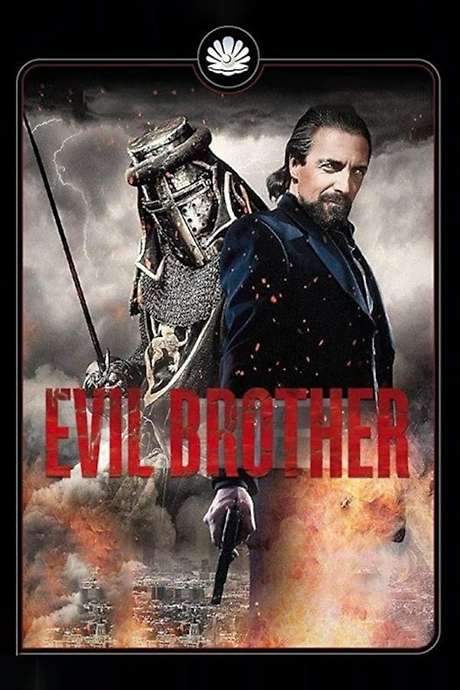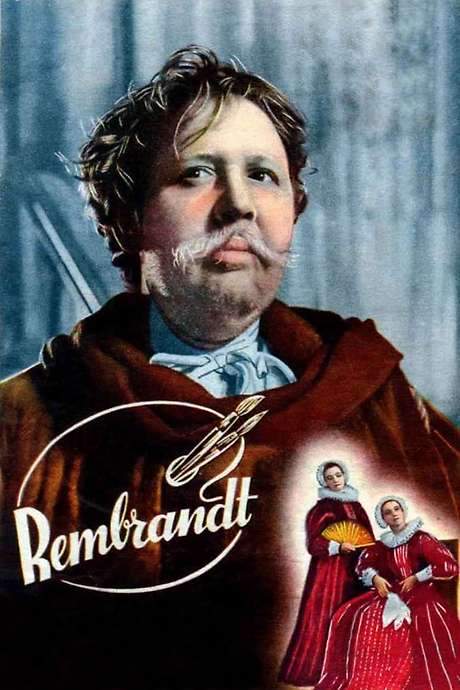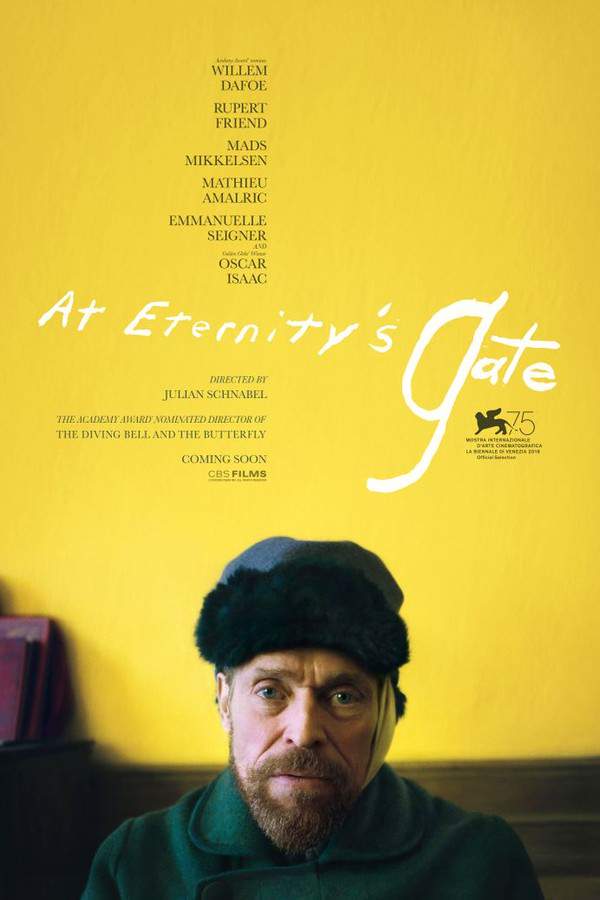
At Eternity's Gate
This film offers a glimpse into the life of Vincent van Gogh, portrayed by Willem Dafoe, during a pivotal period in his life. It explores his struggles with mental health, his feelings of isolation, and the intense passion that drove his artistic creations. Through a cinematic portrayal, the film reveals the turbulent emotions and experiences that shaped some of his most recognizable works, offering a profound look at the mind of a brilliant and troubled artist.
Warning: spoilers below!
Haven’t seen At Eternity's Gate yet? This summary contains major spoilers. Bookmark the page, watch the movie, and come back for the full breakdown. If you're ready, scroll on and relive the story!
At Eternity's Gate (2018) – Full Plot Summary & Ending Explained
Read the complete plot breakdown of At Eternity's Gate (2018), including all key story events, major twists, and the ending explained in detail. Discover what really happened—and what it all means.
The film opens with a black screen, as a man reflects on how he wishes people would perceive him. Soon, we see a man approach a beautiful woman tending to sheep along a rustic country road. They engage in a tentative conversation in French, where he requests to sketch her, yet she seems hesitant to oblige. The narrative pivots when another man instructs him to leave with his artworks, revealing that all the exhibited pieces belong to what becomes the central figure of the story, Vincent van Gogh.
As a group of men deliberate the treatment of artists, they outline policies favoring successful figures while burdening less recognized ones with labor. In a passionate outburst, Paul Gauguin stands up against such attitudes and exits the gathering. Outside, a significant dialogue unfolds between him and Van Gogh, where Gauguin declares his intentions to journey to Madagascar for artistic freedom, advising Van Gogh to consider the same path, marking a transition to English dialogue.
The narrative takes us to Arles, a quaint town, where Van Gogh struggles to ignite creativity within the confines of a dreary room, ultimately resorting to painting his shoes. In a local eatery, he encounters Madame Ginoux, who, while supposed to be working, engages him in conversation about literature, specifically the works of Shakespeare. She admits her unfamiliarity with Shakespeare, prompting Van Gogh to elaborate on his significance, while she gifts him a book of blank pages for his artistic endeavors. In need of shelter, Van Gogh accepts a suggestion to occupy a nearby vacant house.
In nature, Van Gogh finds renewed inspiration. As he paints, he captures fleeting moments, such as sunflowers wilting in the sunlight, but soon discovers vibrant greens that kindle his creativity. He interacts with a woman responsible for caring for his living space, emphasizing that while flowers wither, a painting remains eternal. He proposes to immortalize her beauty on canvas, yet she hesitates as he promises not just to preserve her current appearance but also to portray her youthful essence.
A moment of distraction occurs as Van Gogh, engrossed in his work around groups of schoolchildren, faces their mischief and ultimately reprimands them, revealing the tensions between artists and the public. As the story progresses, Van Gogh encounters further conflict when a local boy antagonizes him, leading to a moment of chaos.
During a hospital scene, his brother Theo pays him a visit, pledging his unwavering support even amidst Van Gogh’s dire circumstances. Though his art captivates audiences, its lack of buyers leads to despair. The audience is later privy to a letter Theo reads to Gauguin, wherein he offers financial support for Gauguin to visit Vincent while purchasing some of Gauguin’s artwork to alleviate some of their struggles.
When Gauguin arrives, their camaraderie flourishes as they paint together outdoors, sharing different artistic philosophies. Van Gogh expresses his unique perspective, suggesting his vision departs from conventional reality, suggesting a deeper imbalance within himself. Their bond remains despite differing opinions on the nature and purpose of art.
As we journey through Van Gogh’s experiences, we see him create poignant black and white sketches, revealing the world through his eyes. However, this vivid artistry eventually leads to Gauguin’s swift departure, which devastates Van Gogh, as he finds solace in increasingly blue landscapes.
The film then presents an intense shift as Van Gogh, now confronted with his mental health struggles, seeks the counsel of a doctor who recommends a voluntary commitment to an asylum, ensuring him he can continue painting. There, Van Gogh mournfully dons a straitjacket, drawn into conversations that reflect his troubled psyche.
Amidst trying moments in the asylum, he engages in dialogues with fellow patients and even a priest, where he emphasizes his understanding of scripture, highlighting his artistic contributions as perhaps divinely inspired. The priest’s disapproval does not deter Van Gogh from believing in the importance of his work.
As the narrative unfolds, we revisit scenes with the woman caring for sheep, now marked by her fear of Van Gogh’s erratic behavior. He seeks connection with Theo and his wife, yet expresses a desire for independence, wrestling with the local sentiments of rejection.
Tragedy strikes when boys vandalize Van Gogh’s paintings, leading to a devastating gunshot that leaves him mortally wounded. In a final somber visit, Theo arrives too late, and the story concludes with Van Gogh’s lifeless body encased in a casket surrounded by his beloved paintings, attracting a throng of admirers.
The screen conveys the staggering reality of Van Gogh’s death and the fact that his innovative sketches remained undiscovered for over a century. As the credits roll, the scene transitions to yellow hues, while Gauguin reads in French, the English subtitles accompanying this poignant moment of reflection.
Last Updated: November 04, 2024 at 01:51
Ending Explained – What Happens at the End of At Eternity's Gate?
Still wondering what the ending of At Eternity's Gate (2018) really means? Here’s a spoiler-heavy breakdown of the final scene, major twists, and the deeper themes that shape the film’s conclusion.
In the film’s closing moments, the most provocative departure from history occurs: the suggestion that Vincent Van Gogh may not have taken his own life but was instead murdered. This idea challenges the traditional understanding of Van Gogh’s death, which is widely believed to have been a suicide caused by his mental struggles. Julian Schnabel, the director, uses this alternative theory not just as a plot twist but as a way to emphasize his view of Van Gogh’s life and art. To Schnabel, Vincent’s true work was about liberation—freeing himself and nature from mental chains through his paintings. The film posits that Van Gogh was at peace in those final scenes, immersed in the natural beauty that he saw and felt deeply connected to. He was not a figure consumed by madness but someone who found a rare clarity and serenity in his relationship with nature and art.
Schnabel’s artistic choice to imply that Vincent might have been murdered serves as a broader metaphor. It suggests that perhaps Van Gogh’s suffering was misunderstood or misrepresented, and that his life and death reflect a larger commentary on how society perceives mental illness and artistic genius. Ultimately, the film champions the idea that Van Gogh’s inner world was a sacred space of clarity and purpose, and that his true essence was not defined by the despair often associated with his name. In the end, Vincent is depicted as a man at the threshold of eternity, peaceful and fulfilled, having transcended the pain that once haunted him. The film leaves viewers with a profound reflection: that in art, and in life, there is a form of eternal peace—not in the pain, but in the liberation and understanding that art can bring.
Last Updated: June 25, 2025 at 08:59
Explore Movie Threads
Discover curated groups of movies connected by mood, themes, and story style. Browse collections built around emotion, atmosphere, and narrative focus to easily find films that match what you feel like watching right now.
Movies about Artistic Obsession like At Eternity's Gate
Films that delve into the passionate and painful lives of brilliant creators.This section features films similar to At Eternity's Gate, showcasing stories about tormented artists and their creative struggle. If you enjoyed watching a portrait of Vincent van Gogh's passionate yet painful life, you'll find other movies that explore the connection between genius, mental anguish, and the relentless pursuit of art.
Narrative Summary
Stories in this thread typically follow a brilliant but troubled artist as they grapple with their craft, societal rejection, and inner demons. The narrative often centers on the creative process as both a salvation and a source of torment, culminating in a legacy born from personal strife.
Why These Movies?
These films are grouped together because they share a deep focus on the psychology of creation, blending themes of mental illness, obsession, and the bittersweet nature of leaving a lasting artistic mark on the world.
Slow Burn Psychological Dramas like At Eternity's Gate
Patient, immersive films that explore deep sadness and psychological fragility.Discover movies with a similar slow pace and melancholic tone to At Eternity's Gate. If you liked the film's immersive and haunting portrayal of Vincent van Gogh's mind, you'll appreciate these other character studies that use a slow burn approach to explore heavy emotions and psychological depth.
Narrative Summary
The narrative pattern is less about plot and more about emotional and psychological immersion. These films often unfold through long, contemplative scenes, allowing the audience to intimately experience a character's isolation, despair, or fragile mental state in a deeply felt way.
Why These Movies?
Movies are grouped here based on their shared slow pacing, melancholic tone, and high emotional intensity. They prioritize mood and psychological depth over fast-paced action, resulting in a heavy, introspective vibe.
Unlock the Full Story of At Eternity's Gate
Don't stop at just watching — explore At Eternity's Gate in full detail. From the complete plot summary and scene-by-scene timeline to character breakdowns, thematic analysis, and a deep dive into the ending — every page helps you truly understand what At Eternity's Gate is all about. Plus, discover what's next after the movie.
At Eternity's Gate Timeline
Track the full timeline of At Eternity's Gate with every major event arranged chronologically. Perfect for decoding non-linear storytelling, flashbacks, or parallel narratives with a clear scene-by-scene breakdown.

Characters, Settings & Themes in At Eternity's Gate
Discover the characters, locations, and core themes that shape At Eternity's Gate. Get insights into symbolic elements, setting significance, and deeper narrative meaning — ideal for thematic analysis and movie breakdowns.

At Eternity's Gate Ending Explained
What really happened at the end of At Eternity's Gate? This detailed ending explained page breaks down final scenes, hidden clues, and alternate interpretations with expert analysis and viewer theories.

At Eternity's Gate Spoiler-Free Summary
Get a quick, spoiler-free overview of At Eternity's Gate that covers the main plot points and key details without revealing any major twists or spoilers. Perfect for those who want to know what to expect before diving in.

More About At Eternity's Gate
Visit What's After the Movie to explore more about At Eternity's Gate: box office results, cast and crew info, production details, post-credit scenes, and external links — all in one place for movie fans and researchers.

Similar Movies to At Eternity's Gate
Discover movies like At Eternity's Gate that share similar genres, themes, and storytelling elements. Whether you’re drawn to the atmosphere, character arcs, or plot structure, these curated recommendations will help you explore more films you’ll love.
Explore More About Movie At Eternity's Gate
At Eternity's Gate (2018) Scene-by-Scene Movie Timeline
At Eternity's Gate (2018) Movie Characters, Themes & Settings
At Eternity's Gate (2018) Ending Explained & Theories
At Eternity's Gate (2018) Spoiler-Free Summary & Key Flow
Movies Like At Eternity's Gate – Similar Titles You’ll Enjoy
About Endlessness (2021) Movie Recap & Themes
Mr. Turner (2014) Full Movie Breakdown
Vincent & Theo (1990) Plot Summary & Ending Explained
Loving Vincent (2017) Detailed Story Recap
The Fountain (2006) Complete Plot Breakdown
Van Gogh: Of Wheat Fields and Clouded Skies (2018) Movie Recap & Themes
About Endlessness (2019) Plot Summary & Ending Explained
Van Gogh & Japan (2019) Full Movie Breakdown
Eternity (1990) Spoiler-Packed Plot Recap
Van Gogh (1991) Spoiler-Packed Plot Recap
Vincent (1987) Full Movie Breakdown
Sunflowers (2021) Complete Plot Breakdown
Van Gogh (1948) Complete Plot Breakdown
Theo van Gogh: The Yearning (1000) Spoiler-Packed Plot Recap
Rembrandt (1936) Ending Explained & Film Insights

